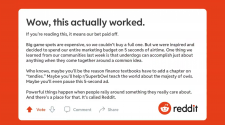Covered California has $3 billion in federal aid for people who enroll this year or already are signed up.
CALIFORNIA, USA — This story was originally published by CalMatters.
Californians enrolled in health coverage this year will qualify for substantial savings as $3 billion in federal aid kicks in, including for people who are currently getting no subsidies.
Covered California, the state’s insurance marketplace, today opened a special enrollment period that allows people to sign up and make use of federal COVID-19 relief dollars designated for health coverage aid. This money is on top of subsidies already provided to some low-income and middle-income Californians through the Affordable Care Act.
Households that already receive some aid could get a couple hundred dollars more in savings in their monthly premiums. Also, people who are currently paying full price for insurance could get about $700 in savings a month, said Covered California Executive Director Peter V. Lee.
Experts expect this boost in aid to translate into a significant drop in the number of Californians living without health insurance, especially once the word spreads.
“This is a huge deal for middle class Californians paying mammoth checks to insurance companies,” Lee told CalMatters. Affordability, he said, is the number one reason people go without health coverage.
The new aid, part of the American Rescue Plan, makes subsidies available to many more Californians. Covered California estimates about 2.5 million people will benefit from new and expanded help. That includes about 810,000 currently uninsured people.
For people looking to sign up, their coverage can go into effect as soon as May 1 if they enroll before the end of April. People will be able to sign up for the remainder of the year. This enhanced federal aid, however, does have an expiration date: It will run through the end of 2022.
For people already enrolled in a health plan through Covered California, their out-of-pocket share will be automatically adjusted; they should see savings as early as next month.
The federal law expands eligibility for federal assistance and sets a maximum for how much of their own money families and individuals can spend on health coverage — 8.5% of their income.
For instance, for a household with $70,000 of annual income, the cost of its health insurance would be capped at $5,950 per year. A household earning $200,000 per year wouldn’t have to pay more than $17,000 per year for health insurance.
“The American Rescue Plan does limit the subsidy to amounts in excess of 8.5% of household income, so for a millionaire that would be premiums in excess of $85,000 (a year) and American health care is expensive but it’s not that expensive,” Joseph Newhouse, a professor of health policy and management at Harvard University, said during a press call with Covered California.
Previously, households with incomes above 400% federal poverty level — about $51,040 for an individual or $104,800 for a family of four — were not eligible for federal assistance. Those families and individuals often buy their health coverage directly from insurers, but now those same people may be able to pocket some of their premium cost if they go through the state exchange.
Last year, California became the first state in the nation to offer aid to middle-income residents who made too much to benefit from federal subsidies. The state raised the threshold for aid to incomes at 600% of the poverty level. Lee said about 50,000 more Californians signed up for coverage through the state marketplace when that assistance came online.
The new federal subsidies will be bigger than what the state provides and will replace state help. Now “California doesn’t have to write the check,” Lee said.
According to the state Department of Finance, it may be another month or so before the state knows exactly how this will be reflected in the state’s budget.
California has embraced the ACA wholeheartedly and has passed several pieces of legislation to enhance the health law. Besides creating its own bucket of subsidies, it also created its own tax penalty when the previous administration eliminated the federal one. Surveys and polls have shown that mandating people to have health insurance through a penalty is unpopular, but Lee and other insurance market experts say it does nudge people to sign up.
L.A. Care Health Plan, which serves Los Angeles County, has about 100,000 people enrolled through Covered California. Lower income individuals who are just above the threshold to qualify for Medi-Cal could see their portion of the premium reduced to almost zero, said John Baackes, the CEO of L.A. Care Health Plan.
The vast majority of L.A. Care enrollees “were getting a subsidy of some sort, but none had a $0 payment,” Baackes said.
During 2020, as many people lost their jobs during the pandemic and with it their employer-sponsored health insurance, more people fled to Covered California and Medi-Cal, the state health insurance program for low-income people.
Historically, people drop off Covered California because they gain coverage through a job or become newly eligible for Medi-Cal. Usually, about 10% of those who drop off become uninsured, Lee said. Last year, that number grew — about 25% of those who left Covered California lost coverage completely.
WATCH: Telehealth providers report increase in requests for birth control















